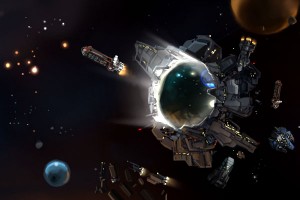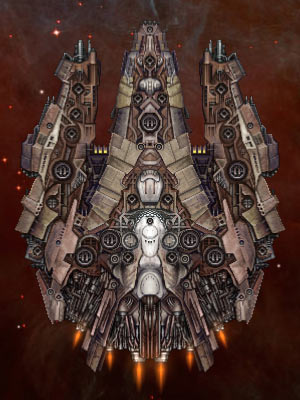Lore Spotlight: Factions and Worlds
Hi everyone! It’s me again, your favorite friendly, neighborhood, behind-the-scenes bulgarian. Man, that’s a mouthful.
I was talking to Alex a while back and he viciously commanded kindly asked me to shed some light on the writing process, specifically regarding the Factions and World Development.
I forgot about that request immediately. But now, he has activated my pain implant graciously reminded me, and here I am with a new blog post for your reading pleasure.
The Factions
I think most of you will agree that one of the keys to having a memorable game experience is the believeability of the game world. Those that do not agree, please go back to playing Tabula Rasa. Oh wait, you can’t! <gloat> Ahum.
Anyway, one of the types of action that the player can perform in the game will be interacting with the Factions. These are large collections of human beings that share the same philosophy, goals and are big enough to be a factor on the political stage in the Sector. So how to come up with these? The truth is, some of the factions were born out of a need for a particular role to be filled within the game. For example, we knew we wanted a big, monolithic, largely obtuse but powerful organization that claimed to be the spiritual successor of the Domain of Man. Thus – the Hegemony. Next, we wanted a counterbalance to this feel, and we came up with the small, intelligent, vicious and astute corporation – Tri-Tachyon. And so we created most of the factions in this manner, as actors fulfilling roles, and their allies/enemies based on the type of feel we wanted to create within the game. Some of the names and portfolios of these factions have a rich history, based on years of wasted time by yours truly, as a young lad writing GURPS Space campaigns and short stories designed to flesh out those campaigns.
While having a number of factions to pick from and knowing what it is they roughly represent, want to achieve etc. is great, I really felt like I had to nail the psychology of each faction more accurately. After all, the situation in the Sector is pretty unique. The pivotal, crucial thought that occupies the minds of most humans within it is the role of technology in their lives. Unlike the present day, while technology plays a critical role in survival, it’s also poorly understood and is retrogressing with each breakdown that can’t be fixed. In addition, I wanted to present each of the factions as realistically as possible, which included having both negative and positive qualities. So, I decided to do some research on personality types and see if I could associate each faction with a particular psychology.
In order to grapple with the large amount of information, I used an excruciatingly boring, colossal spreadsheet to write out each factions’ outlook, motivators, virtues and vice, fears and fixations. Thus, I proved once again that all game design is just mucking around in some spreadsheet. Ah, well.
To give an example, I profiled the Tri-Tachyon Corporation as arrogant scientist/corporate types. They see themselves as keepers of knowledge, heirs to the technological marvels created by the Domain. Obsessed with efficiency and the acquisition of technology that remains in the Sector, they condemn those that shun them. They are prone to over-thinking problems as a group, and care little for the plight of those outside their inner circle. At their best, they are competent, effective and cooperative with one another. At their worst, they are detached, elitist and cruel. Their belief is that the non-functioning star gates are merely dormant, and they they are actively looking for the key that will awaken them – thus restoring to them the lost technological wealth of the Domain. Secret tech-mining operations run by the Corporation can be found in the farthest reaches of the Sector.
But wait, there’s more! Hey seriously, if you’ve read this far, please get up, stretch your arms and legs, and get yourself a nice treat as a reward for persevering though these, the inner secrets of Fractal Softworks’ design process. Done stretching? Don’t open that other browser tab!
The Worlds
Designing worlds is always a challenging task for a variety of reasons. The main one is, we humans have only ever set foot on one (the Moon landing was faked!) so it is real hard to get a different frame of reference. Also, the sizes we are talking about when we describe planets dwarf the imagination. Our minds are literally incapable of visualizing such vastness. The process roughly follows the following flow. First, pick a defining planetary characteristic. Is the planet surface a scorched volcanic wasteland? A dry, parched desert? A frozen, uninviting chunk of ice? Or is it a verdant, terran-like gem?
Once the biome has been chosen, you have to think about the other layers of a world that make it a point of interest. Which Faction is in political control of the planet? What kind of government is there? How many people live there and under what conditions? Answer to questions like these also tie into gameplay systems, because they dictate the beginnings of the supply and demand based mechanics that underpin the in-game economy.
Conclusion
Well, I hope you guys had fun reading that post. Now I gotta go, and build my fifth outpost on that jungle world. Maybe this one won’t sink into the swamp.
























